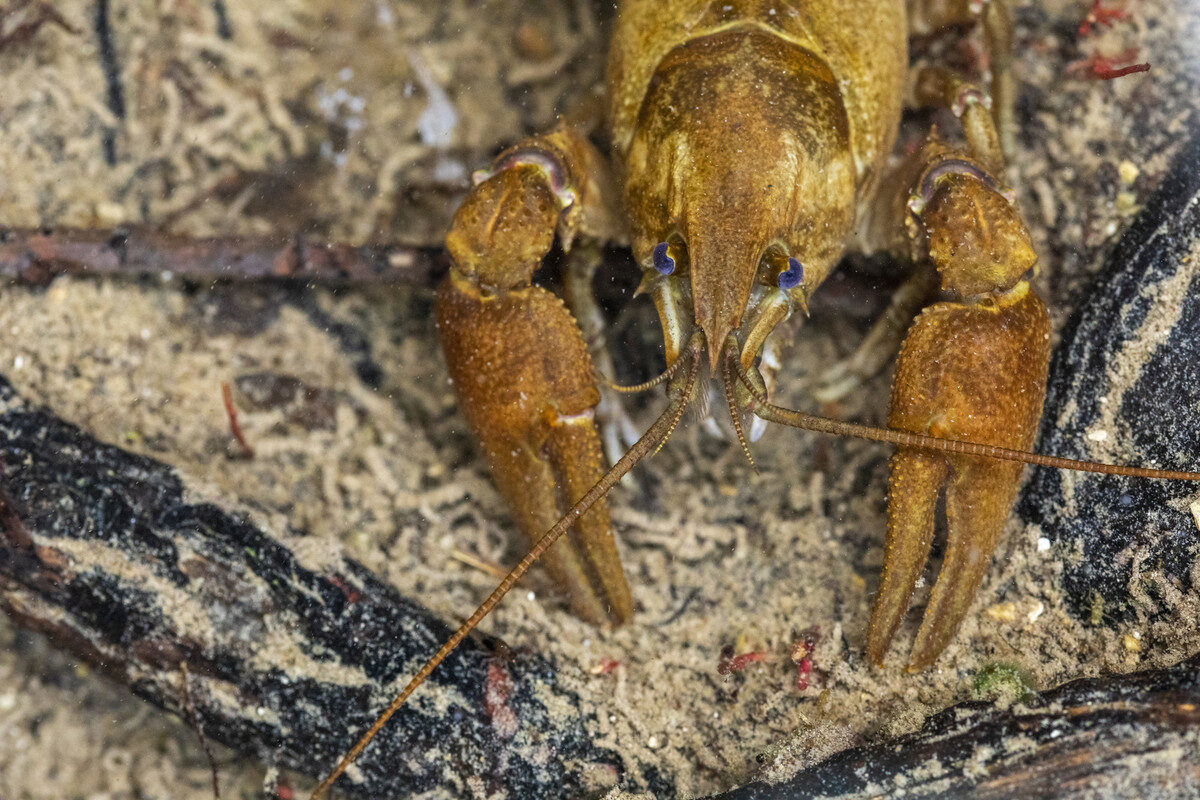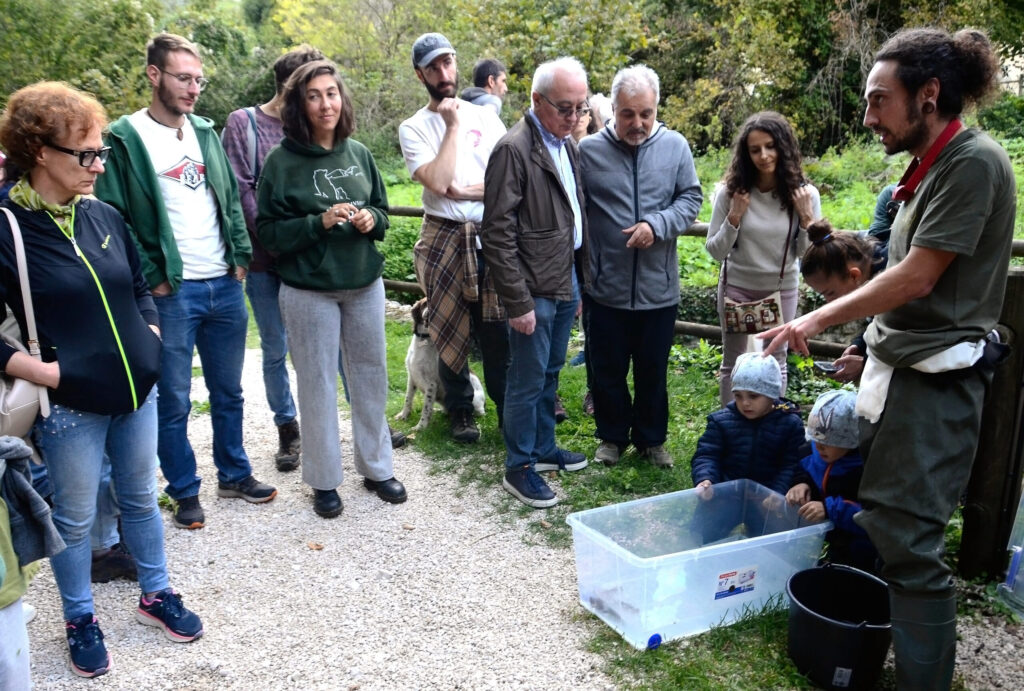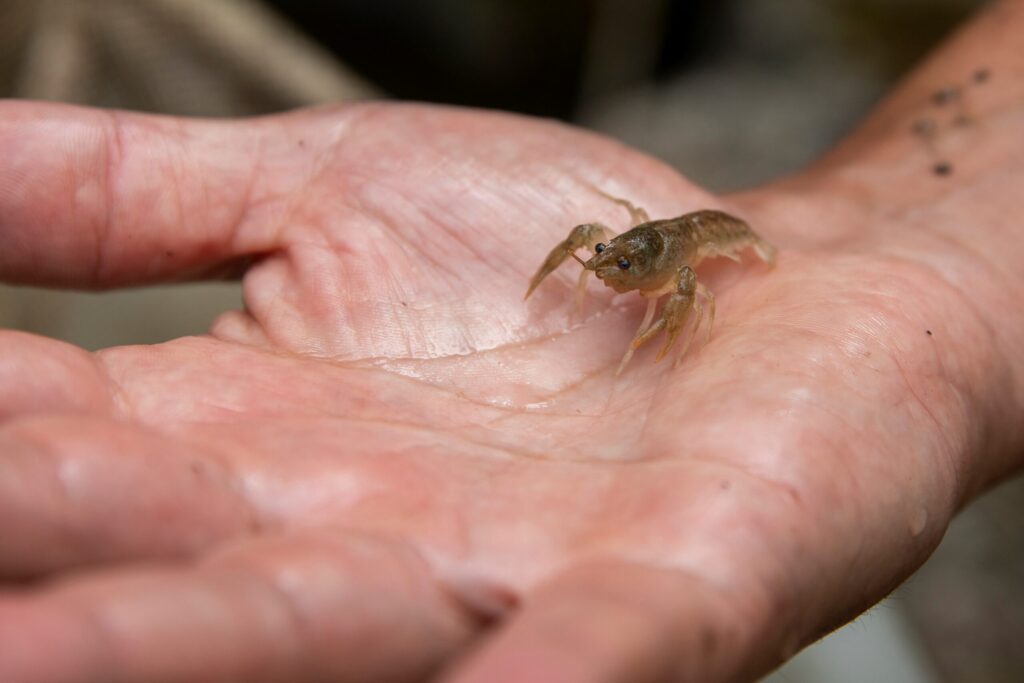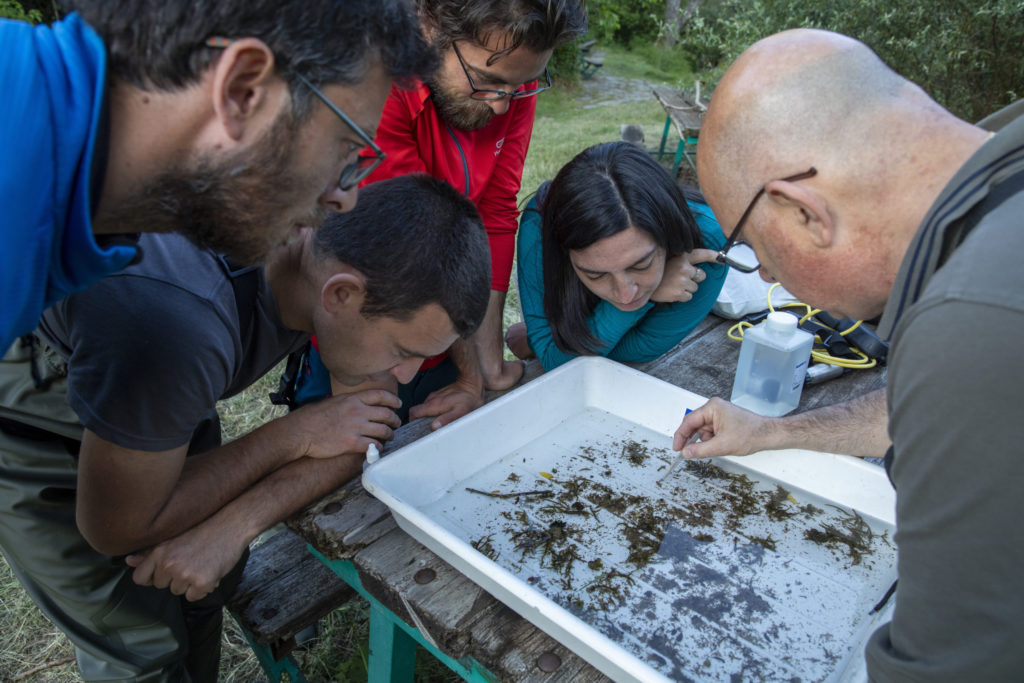A keystone species in freshwater ecosystems, the white-clawed crayfish is in decline across much of Europe. The opening of a second crayfish breeding centre in Italy’s Central Apennines will enhance reintroduction efforts by the local rewilding team and contribute to the wider restoration of rivers in the landscape.

Towards wilder rivers
The restoration of rivers in the Central Apennines rewilding landscape in Italy has taken another step forward with the opening of a new white-clawed crayfish breeding centre. The centre, which is located on the Gizio River, in the Genzana bear-smart community in Pettorano sul Gizio, complements an existing centre near the town of Borrello, located in the eastern part of the rewilding landscape. With reintroduction and restocking efforts led by the Rewilding Apennines team, this centre has been releasing crayfish into the Verde River for several years.
A third breeding centre, near the town of Monteferrante, is scheduled to open next year. According to Italian law and the permits obtained by the Rewilding Apennines team, white-clawed crayfish reintroduction efforts must take place within the same river basin from where individuals are sourced for those efforts.

A species in decline
Small and bronze-coloured, with pale cream or rose undersides on its claws, the white-clawed crayfish is native to Italy and large parts of Europe. It inhabits freshwater streams, hiding underneath stones and rocks and in small crevices, where it forages for food. A keystone species, it is an important food source for animals such as otters, fish and birds, while it helps to maintain balance within invertebrate communities as it predates on smaller animals. It also helps to keep water bodies clean by feeding on decaying matter.
Today, the white-clawed crayfish in decline across much of its range, facing an array of threats including poaching, disease, competition with invasive species, and climate change. The streams and rivers where the white-clawed crayfish are being released in the Central Apennines are free from invasive species, including the red swamp crayfish, a North American species which can be a carrier of crayfish plague.

The reintroduction process
The juvenile crayfish that are now being raised in the new centre were collected from a healthy population in a river in Maiella National Park. The 110 individuals, of which two-thirds are female, have been placed in large baskets, placed in a canal that was part of an ancient water mill on the Gizio. A number of bricks have been placed in the baskets to enable the crayfish to hide. They are looked after by Rewilding Apennines field officer Julien Leboucher, who checks them every day and feeds them when necessary, and guides any visitors who might want to see them.
“This is a very non-invasive rearing process and the baskets are an ideal place for the young crayfish to live and grow,” explains Rewilding Apennines communications manager Angela Tavone. “We expect to reintroduce the first individuals from the centre into the Gizio next spring or summer, with the eventual aim of restoring a viable population in the river.”

Community engagement
The opening of the new breeding centre was marked by a special event in Pettorano sul Gizio on September 21. Dedicated to rivers and water in general, as well as crayfish, it drew around 40 people – mostly from the town itself, and surrounding villages. In addition to presentations by the Rewilding Apennines team, there were stories, games, guided walks, and artistic and musical performances.
“It was a really successful and memorable occasion that celebrated the nature and culture of the landscape,” says Angela Tavone. “Crayfish disappeared from the Gizio many years ago, so local people have no memories of the species. We showed them a male and female, and they were very curious. Everyone present was delighted at the prospect of this new inhabitant in their local river.”
The event gave the Rewilding Apennines team the opportunity to share information on other water-related topics, such as the benefits of removing barriers on rivers, the importance of addressing water pollution, and the ways that healthy waterways can enhance mental health. Later this month, the Rewilding Apennines team will oversee the removal of weirs on the Giovenco River, with funding provided by the Open Rivers Programme.

Establishing viable populations
A positive feasibility study on the release of white-clawed crayfish was carried out on streams in the Central Apennines rewilding landscape in 2020. This opened the door to the ongoing restocking programme, which is being supported by funding from French philanthropic foundation Fondation Ensemble, as well as from the UK-based company Mossy Earth. The Maiella National Park is providing scientific and technical support.
The population of crayfish released in the Verde River is doing well, although there were some losses when parts of the river dried up this summer.
“September was a very rainy month and the water level in the river has thankfully now risen,” explains Angela Tavone. “With the ongoing impact of climate change, these periods of drought and flooding are likely to become more pronounced moving forwards. Operating breeding centres is a way to counteract this impact, as we have some control over when to release the animals and avoid periods of drought. The overall aim of our reintroduction and restocking efforts is to create healthy crayfish populations in multiple rivers that are resilient to environmental pressures such as climate change, and which can thrive independently.”

Invaluable support
Rewilding Europe’s work in our rewilding landscapes is supported by a wide range of highly valued partners. We would particularly like to acknowledge those providing core funding – notably the Ecological Restoration Fund, the Dutch Postcode Lottery, WWF-Netherlands, and Arcadia. Their longstanding support plays a critical role in enabling us to deliver and scale up rewilding impact.
